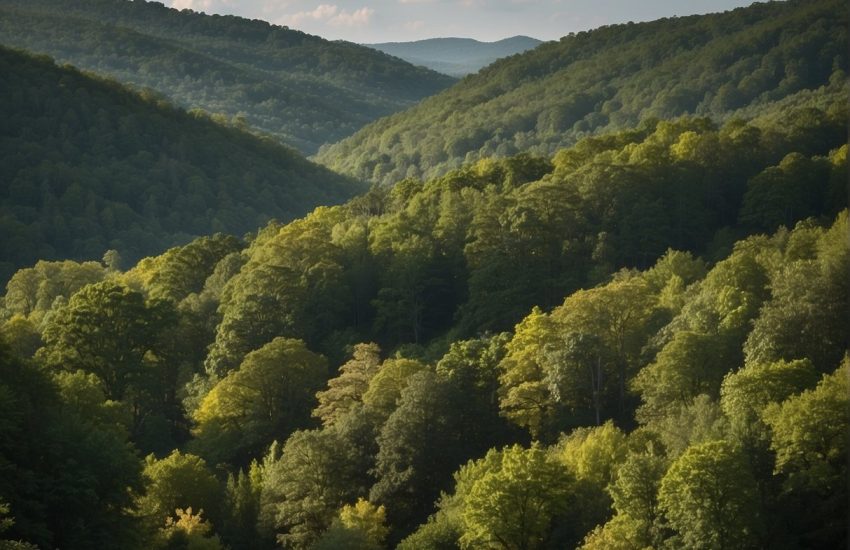California Poppy from Seed: A Guide to Growing the State Flower
California poppies are a beautiful and vibrant addition to any garden. These native wildflowers are known for their bright orange and yellow blooms, and are the state flower of California. While they are often seen growing on the side of the road or in open fields, they can also be grown from seed in a home garden.

The scientific name for the California poppy is Eschscholzia californica, and it is a member of the Papaveraceae family. This hardy plant is drought-tolerant and can thrive in a variety of soil types, making it a great choice for gardeners of all skill levels. Planting California poppies from seed is a simple and rewarding process, and can result in a stunning display of flowers in the spring and summer months.
Whether you are a seasoned gardener or just starting out, growing California poppies from seed is a fun and easy way to add color and beauty to your outdoor space. With a little bit of patience and care, you can enjoy these stunning native wildflowers in your garden for years to come.
Understanding California Poppies

Botanical Profile
The botanical name of the California poppy is Eschscholzia californica. It is a member of the Papaveraceae family and is native to California. The plant is an annual or perennial, depending on the climate and growing conditions. The plant is known for its bright orange flowers, which bloom from spring to summer.
Growth Habit and Plant Type
California poppies are known for their low-growing, spreading habit. They typically reach a height of 6-12 inches and can spread up to 18 inches in diameter. The plant type is herbaceous, meaning it has soft, green stems that do not become woody. The plant thrives in full sun and well-draining soil.
Overall, California poppies are a popular choice for gardeners due to their vibrant color and easy-to-grow nature. They are a great addition to any garden or landscape and can be grown from seed with minimal effort.
Cultivation Basics
California poppies are a popular choice for gardeners looking to add a splash of color to their outdoor spaces. Growing these beautiful flowers from seed is a rewarding experience that requires some basic knowledge of cultivation practices.
Seed Selection and Germination
When selecting seeds, it is important to choose a reputable supplier and look for high-quality, fresh seeds. California poppy seeds can be sown directly into the ground in the fall or early spring, depending on the climate. Germination typically takes between 7 and 21 days, and the seeds should be kept moist during this time.
Soil Preparation and Requirements
California poppies prefer well-drained soil that is slightly acidic to neutral (pH 6.0 to 7.0). They can tolerate a wide range of soil types, including sandy, loamy, and rocky soils. Before planting, it is important to prepare the soil by removing any weeds or debris and adding organic matter such as compost or well-rotted manure.
Planting and Spacing Guidelines
California poppies should be planted in a sunny location with good air circulation. The seeds should be sown thinly and covered with a light layer of soil. It is important to keep the soil moist during germination and until the plants are established. Once the plants have reached a height of 2 to 3 inches, they can be thinned to a spacing of 6 to 12 inches apart.
In summary, growing California poppies from seed is a straightforward process that requires some basic knowledge of cultivation practices. By selecting high-quality seeds, preparing the soil properly, and following planting and spacing guidelines, gardeners can enjoy the beauty of these colorful flowers in their outdoor spaces.
Care and Maintenance

Watering and Fertilization
California poppies are drought-tolerant plants, but they still need regular watering to thrive. Water the plants deeply once a week, making sure the soil is moist to a depth of at least six inches. During hot and dry weather, you may need to water more frequently. Avoid overhead watering, as this can encourage fungal diseases. Instead, water at the base of the plant.
Fertilization is not necessary for California poppies, as they can grow well in poor soil. However, if you want to encourage more blooms, you can fertilize with a balanced fertilizer once a month during the growing season. Avoid using high-nitrogen fertilizers, as this can encourage leaf growth at the expense of flowers.
Deadheading and Pruning
Deadheading is the process of removing spent flowers from the plant. This helps to encourage more blooms and prevents the plant from going to seed too quickly. Use scissors or pruning shears to cut off the spent flowers, making sure to cut back to the nearest set of leaves.
Pruning is not necessary for California poppies, as they have a naturally compact growth habit. However, if your plants become leggy or start to flop over, you can prune them back by one-third to one-half of their height. This will encourage bushier growth and more blooms.
Pest and Disease Management
California poppies are generally pest and disease-free, but they can be susceptible to aphids and spider mites. If you notice an infestation, you can spray the plants with a strong stream of water to dislodge the pests. Alternatively, you can use an insecticidal soap or neem oil spray.
Fungal diseases can be a problem in humid or wet conditions. To prevent fungal diseases, avoid overhead watering and make sure the plants have good air circulation. If you notice signs of fungal disease, such as yellow or brown spots on the leaves, you can treat the plants with a fungicide spray.
Environmental Considerations

Sunlight and Temperature
California poppies thrive in full sun, meaning they need at least six hours of direct sunlight per day. They can tolerate a range of temperatures, from cool spring weather to hot summers, but they prefer temperatures between 60-65°F (15-18°C). In warmer climates, it’s important to provide some shade during the hottest part of the day to prevent the plants from overheating.
Humidity and Mulching
California poppies are drought-tolerant and prefer dry climates, so they don’t require a lot of humidity. In fact, too much moisture can cause the plants to rot. Mulching can help retain moisture in the soil, but it’s important to use a well-draining mulch like gravel or pine needles to prevent water from pooling around the plants. Mulching also helps to regulate soil temperature and suppress weeds.
Overall, California poppies are easy to grow and maintain, but it’s important to provide the right environmental conditions for them to thrive. By providing full sun, well-draining soil, and minimal moisture, gardeners can enjoy a colorful display of these beautiful flowers from seed.
Propagation and Lifecycle
California poppies are easy to grow from seed, making them a popular choice for gardeners. They can be propagated in the spring or fall, and will bloom in the following season.
From Seed to Bloom
To grow California poppies from seed, start by preparing the soil. The soil should be well-draining and slightly acidic. Sow the seeds directly into the soil, and cover with a thin layer of soil. Water the seeds well, and keep the soil moist until the seedlings emerge.
Once the seedlings have emerged, thin them out to about 6-12 inches apart. This will allow the plants to have enough space to grow and bloom. California poppies prefer full sun, and will bloom from late spring to early summer.
Self-Seeding and Longevity
California poppies are annuals or short-lived perennials, meaning they will only live for a few years. However, they are prolific self-seeders, and will often reseed themselves in the same area year after year.
To encourage self-seeding, leave the spent flowers on the plant until they dry up and turn brown. Then, collect the seeds and scatter them in the same area. This will ensure that you have a continuous supply of California poppies in your garden.
In conclusion, California poppies are easy to grow from seed and make a beautiful addition to any garden. With proper care and maintenance, they will bloom from late spring to early summer and self-seed for years to come.
Frequently Asked Questions

When is the ideal time to plant California poppy seeds?
The ideal time to plant California poppy seeds is in the fall or early spring. Planting in the fall will give the seeds time to germinate and establish before the hot summer months. Planting in early spring will also allow the seeds to germinate and establish before the hot summer months, but may require more frequent watering.
What are the different varieties of California poppies?
There are several different varieties of California poppies, including the classic orange poppy, as well as white, pink, red, and yellow varieties. Some varieties also have double blooms or unique color patterns.
How should California poppy seedlings be cared for?
California poppy seedlings should be watered regularly, but not over-watered. They prefer well-draining soil and full sun. Once established, they are drought-tolerant and require little maintenance.
What is the germination temperature for California poppy seeds?
California poppy seeds germinate best at temperatures between 60-70°F (15-21°C). They can also germinate at lower temperatures, but may take longer to sprout.
How can you encourage continued blooming in California poppies?
Deadheading (removing spent blooms) can encourage continued blooming in California poppies. They also benefit from occasional fertilization and regular watering.
Are California poppies considered a perennial or an annual plant?
California poppies are considered a perennial plant in mild climates, but may act as an annual in colder climates. They reseed easily and can often be found growing as volunteers in the garden.



Many thanks for your advice. I am trying to develop a California Poppy bed in front of my home in coastal British Columbia, just north of California. I have sewn many seeds and some of them have come up. They are now about 6 inches tall if they are standing. My questions is about most of them lying flat on the soil. Why do they do this? Should I do something to help them stand up?
Your California Poppies lying flat on the soil could be due to a few reasons. Firstly, they might not be getting enough sunlight, which is essential for strong, upright growth. Ensure they are planted in a location that receives full sun. Secondly, overwatering can cause weak stems that cannot support the plant, so make sure the soil is well-drained and avoid excessive watering. Lastly, the plants may need more support as they establish themselves. You can lightly stake them or use a gentle support to help them stand. –Plant Native Team